By Tom Wintaugh | September 21, 2023

See why top ecommerce brands use Miva’s no-code platform to run
multiple stores, manage massive catalogs, and grow their revenue.
The high expense of paid ad campaigns across all major platforms makes it easy to burn through resources without getting the results you want. Learning how to develop effective and affordable ad campaigns is one of the key concerns of selling online, and finding the best ad platform can be daunting. Sellers can reduce the risk of experimental ad spends by identifying the right ad platform for an individual business’ customers and needs. Here are the important factors to consider:
Before you launch ads on new platforms, it’s helpful to see how much traffic they are already sending you before you begin any outreach. We discussed the main drivers of ecommerce site traffic here. Using Google Analytics and other site traffic reports can help you determine how many visitors are coming to your website from various sources. Users arriving at your site after being directed there by content, links, or ads by any advertising platform can indicate the health of that channel and its appropriateness for your customers. For example, if more traffic arrives every month from Facebook posts than from Instagram, that might indicate that your audience prefers that platform, making it a better candidate for advertising.
To facilitate the best capture of traffic data, append external links to your site with UTM tracking parameters whenever possible.
Next, determine how big a potential audience might be on the various ad platforms. The average number of daily site visitors will give you a snapshot of the relative popularity of each venue. Here’s a breakdown in DAU (daily average users) for the major ad platforms:
Google: Google, widely known to be the most visited website globally, logs 3.5 billion searches per day.
Facebook: Facebook’s gargantuan user base clocks in at approximately 1.91 billion DAUs.
LinkedIn: LinkedIn doesn't regularly disclose DAU figures, but as of 2021, it reported having 930 million total members. (The number of DAUs would be considerably less.)
AdRoll: AdRoll is a retargeting platform than a user platform, but ads are currently displayed on over 110,000 websites.
Instagram: Instagram, which is owned by Facebook, reports having over 500 million DAUs.
TikTok: TikTok reports that it has around 1.7 billion monthly active users globally. The daily active users might be a substantial fraction of this number, but precise numbers aren't publicly available.
Amazon: Amazon doesn't disclose DAU figures, but as of 2023, it had over 200 million Prime members globally, and it's reasonable to assume that a significant portion of these members visit Amazon daily.
Reddit: Reddit reports having 56 million daily active users and is growing rapidly, with as many as 25% more daily users expected in the next two years.
Yahoo: Yahoo has declined in popularity significantly in recent years, but still logs a billion daily users across all of its web products.
Bing: Bing, owned by Microsoft, has been steadily rising in daily users in recent years, cresting 100 million daily visitors.
These figures demonstrate relative market share but are not specific enough to help you see the size of your business’ specific audience. Is a bigger audience daily better? Not necessarily. In fact, spending ad money on too large and unfocused of a target audience can be costly.
A quick way to determine the size of your preferred audience within the total number of site users is to use targeting features when setting up an ad campaign on various platforms. Set up a sample ad in Facebook Business Manager, Instagram Ads Manager, Microsoft Advertising, etc, and compare the potential impressions when entering demographic audience targeting preferences.
Do the users of a specific ad platform represent the age, location, profession, and spending power of your ideal customer? When it comes to millions or even billions of daily users, every platform serves a diversity of users, but each has a brand identity which does connect with specific segments of internet users. They key is to align that identity with your brand identity. TikTok may be thought of as a youthful platform with a coveted 18-34 year-old audience, but if your product line primarily appeals to the Boomer audience, it may not be the right fit. Start by compiling customer personas for your business—this guide shows you how.
If you have a lot of followers from a specific platform like Instagram, you already have a huge leg up over starting from scratch with a new provider—that’s because your existing social network:
Larger macro trends about platform audiences can dictate results - so you want to check what the historical conversion rate is for any ad solution you are considering. The average conversion rate for all advertisers is 2 - 5%, but ideally you want to convert closer to 10% to really make your ad dollars counts. Bing ads convert at 3% on average, but Google ads are closer to 4%. Amazon PPC ads leave both in the dust though, with an average 9.6% conversion rate. These rates will not automatically occur for your ads, but they give a good ballpark of how effective each platform is for converting sales.
Building, launching, and analyzing ad campaigns can be very complex and take time to master—time you don’t have if you are already spending money to advertise on a platform. Build a few sample ads and budgeted campaigns on various platforms to assess how difficult it will be to learn and train.
You need to place your ad dollars where your audience already is, where you have the greatest chance for conversion, and on systems that are manageable to run without excessive training. There is no one “best ad platform” for all businesses. Just as with other technology partnership decisions, selecting an effective ad platform is a strategic choice which will be different for every buyer and every website. Instead of the biggest, most popular, or even cheapest ad platform, look for options that most closely align with how (and who) you already do business.

Katy Ellquist, Miva’s Digital Marketing Strategist, is an accomplished writer, marketer, and social media analyst who has created sophisticated content campaigns for a broad range of professional clients. She brings to Miva a complex understanding of ecommerce trends and techniques, building upon extensive digital agency experience and a prior role as direct liaison to Miva’s top accounts. Katy is a regular contributor to the Miva blog, covering essential ecommerce topics like design & development strategy, site optimization, and omnichannel selling, with the goal of increasing the actionable knowledgebase of the entire Miva community.
Love it? Share it!
No worries, download the PDF version now and enjoy your reading later...
Download PDF